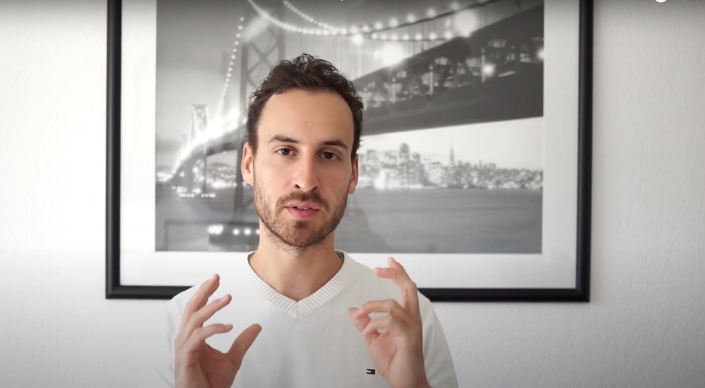How can transformative learning help leaders to further develop an engaging learning journey for their team
Jack Mezirow’s definition of transformative learning
Transformative learning is sometimes called transformation learning and focuses on the idea that learners can adjust their thinking based on new information.
Jack Mezirow is considered the founder of transformative learning. Mezirow’s transformative learning is “an orientation which holds that the way learners interpret and reinterpret their sense experience is central to making meaning and hence learning.”
In simple terms, transformative learning means that learners get new information to evaluate their previous ideas and understandings and go beyond the mere acquisition of knowledge. This type of learning experience involves a fundamental shift in learners’ perceptions – learners begin to question everything they have known or thought and examine things from new perspectives to make room for new insights and information.
The stages of Jack Mezirow’s transformative learning theory
Everyone learns differently, and understanding how people learn is critical to educational success. Leaders can significantly benefit from understanding how learning works for different employees. By understanding how learning happens, leaders can maximize their efforts and create a culture where learners can thrive.
Let’s dive into the typical stages in Jack Mezirow’s transformative learning theory that adult learners follow. These stages are key to helping learners transform their prior beliefs as they receive new information and insights.
Disorienting dilemma. The first part of transformational learning is the disorienting dilemma, which is when a learner realizes that what they thought or believed in the past may not be correct.
Self-examination. After a disorienting dilemma, learners reflect on their past experiences and how they relate to what they have just learned.
Critical assessment of assumptions. At this stage, learners accept that some of their past assumptions may have been wrong, making them more open to new information and ideas.
Planning a course of action. Learners at this stage consider what learning strategies they will need to fully understand a problem or situation.
Acquisition of knowledge. By now, learners have begun to learn new things and consider different perspectives to improve their understanding.
Experimenting with new roles. As learners try out new roles, gain new experiences, and make their own decisions, they begin to build greater self-awareness and confidence.
Building self-efficacy. Self-efficacy involves building confidence in beliefs and understanding and continuing to practice the transformative cycle as learners move forward.
Examples of transformative learning and how it helps develop the workforce
There are many ways leaders can implement transformative learning in their organizations.
Scenario-based learning
Scenario-based learning combines storytelling and interactive learning to simulate real-life situations, making the learning content relatable and easy to remember. This training approach allows for showing rather than telling how to solve real-life situations that learners are likely to encounter on the job.
Job swapping
Job swapping involves an employee swapping roles with another employee in a different department or location for a period of time. This gives employees a unique opportunity to get a bigger picture of the company and a clearer understanding of how different departments or areas function.
Job shadowing
Job shadowing is a technique that facilitates on-the-job training and career development by allowing an employee to shadow a person doing a job they are interested in, giving the employee the opportunity to ask questions and learn new skills.
Mentoring and coaching
Mentoring seeks to build wisdom and the ability to apply skills, knowledge, and experience to new situations and processes. Coaching focuses on achieving very specific objectives within a set period of time. Coaching is primarily concerned learner’s performance and the development of specific skills. However, the mentoring or coaching process should evolve as learners achieve set goals and learn new behavior. The process continues until everyone is satisfied that the learner’s goals have been achieved.
Personalized learning paths
A personalized learning path takes into account key learning conditions, such as the learner’s motivation and related feelings of autonomy, ability, and the relevance of what is learned. The goal is to increase the learner’s motivation and commitment to learning, recognizing that learners often have a stronger understanding of what they are capable of and what drives them to succeed.
Ready to personalize your employees’ learning journey?
Analyzing the skills needed for future growth is critical to better define the return on investment in developing a learning journey in your organization. HRForecast has a curated library of more than 1,000+ training courses so you can focus on closing the most critical employee skills gaps that matter.
Microlearning
Microlearning is characterized by the use of short, targeted learning units designed to meet specific learning objectives. Microlearning uses various formats to deliver information in short chunks. Take a look at some effective microlearning formats here.
Create a transformative learning journey for your workforce
Learning is not a one-off event. Professionals want to master their craft and strive for autonomy and purpose. See how HRForecast developed and delivered learning journeys for our client Telekom AG to facilitate employee development in alignment with corporate goals and initiatives.
Stay up to date with our newsletter
Every month, we’ll send you a curated newsletter with our updates and the latest industry news.



























 info@hrforecast.de
info@hrforecast.de
 +49 89 215384810
+49 89 215384810






